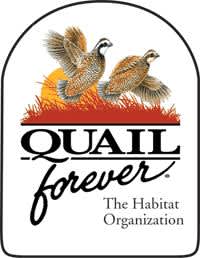Lowcountry South Carolina Quail Forever Sets Bar High for Quail Recovery
Quail Forever 05.13.13

Quail enthusiasts in South Carolina have formed Quail Forever’s (QF) newest chapter, Lowcountry Quail Forever. The chapter, based in Mount Pleasant, will focus its efforts on improving bobwhite quail habitat in the state’s Francis Marion National Forest.
The chapter is led by President Tim Long of Mount Pleasant. Long, a Tennessee native, moved to South Carolina in 1996 and involved himself with community quail conservation efforts. “Quail habitat restoration is not just beneficial for quail, but for all upland wildlife, including songbirds, turkey, rabbits and the threatened red-cockaded woodpecker,” said Long.
Francis Marion National Forest is the 258,000 acre national forest located 20 miles north of Charleston. It has been managed by the Forest Service since 1936; however, human occupation can be traced back 10,000 years. The chapter will work to create brood rearing habitat on approximately 80 wildlife openings, each consisting of 2-3 acres, throughout the forest. These brood rearing areas are critical for bumblebee size quail chicks to navigate through while foraging.
“Our chapter feels it is critical to have land open to everyone, because it will benefit the community as a whole and the upland habitat which wildlife depend on so heavily,” noted Long.
“Quail Forever’s locally empowering model was important to this group of motivated volunteers,” reports Shon Robbins, Quail Forever regional wildlife biologist. “With the members’ history of quail conservation efforts, I know the positive impacts made by the Lowcountry Quail Forever chapter will be felt throughout the community.”
The chapter’s first meeting meeting is Wednesday, May 16, 6:30pm at Zeus Restaurant in Mount Pleasant. The chapter is actively looking for volunteers. Those interested are encouraged to contact Tim Long at (843) 324-8734 or email Tim.
South Carolina Habitat Reports: Unlike states further north, winter mortality from weather conditions is not a big issue in South Carolina. Winter rains following several years of drought could lead to good soil moisture conditions, which may also result in improved nesting and brood habitat conditions, according to Billy Dukes, small game project supervisor for the South Carolina Department of Natural Resources.
Overwinter cover held up well due to the mild conditions and no frozen precipitation; however, land managers interested in managing for quail should pay close attention to size of burn blocks during prescribed burning operations and make sure to leave adequate escape cover.

